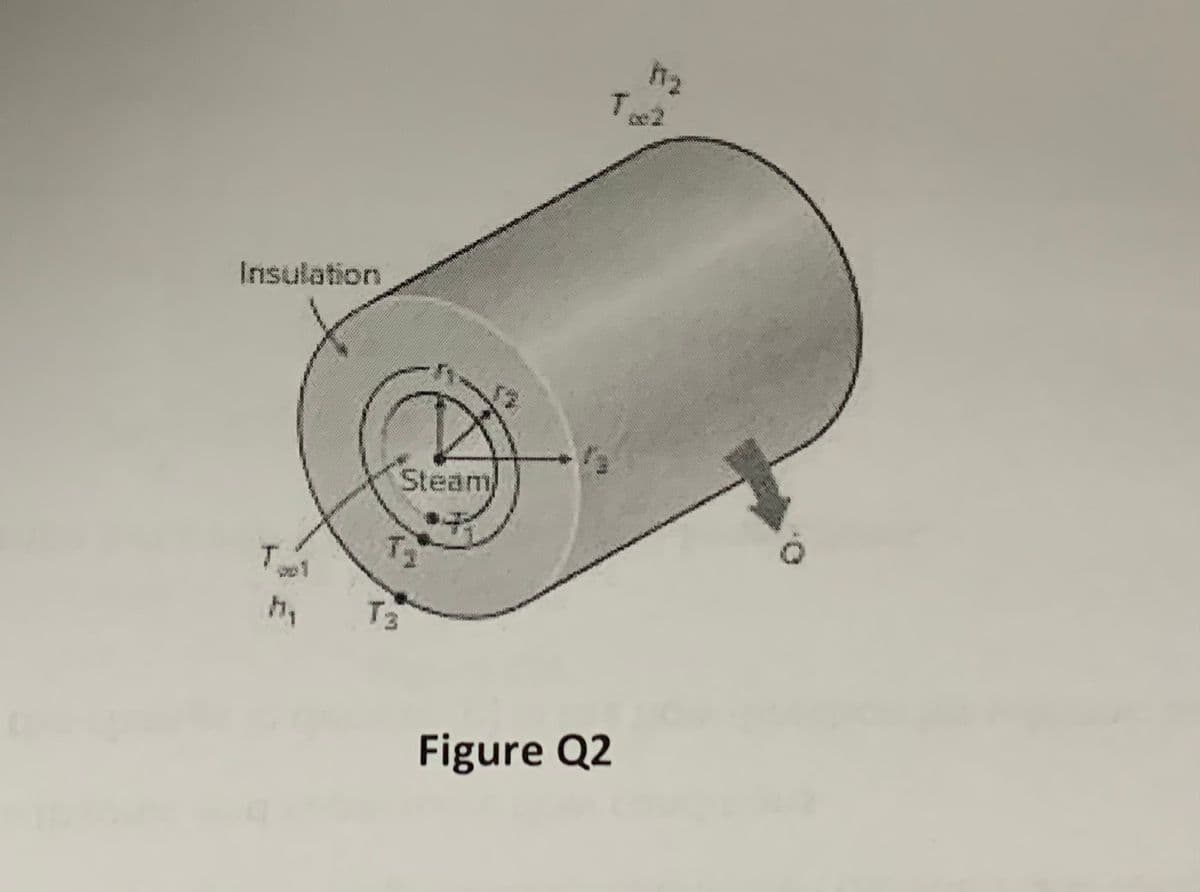Steam at To1 = 320°C flows through a cast iron pipe (k = 80 W/mK) with inner and outer diameters of D1= 5 cm and D2 = 5.5 cm, respectively. The pipe is covered with 3-cm-thick glass wool insulation with k = 0.05 W/mk (Figure Q2). Heat is lost to the surroundings (To2 = 5°C) by natural convection and radiation, with a combined heat transfer coefficient of h2 = 18 W/m2.K. (a) Taking the heat transfer coefficient inside the pipe to be h1 = 60 W/m2 K, Calculate the rate of heat loss from steam per unit length of pipe. (b) Calculate the temperature differences between the pipe shell and the insulation. Someone comments that a microwave oven can be viewed as a conventional oven with zero convection resistance at the surface of the food. Is this a correct statement? Discuss the reason.
Steam at To1
= 320°C flows through a cast iron pipe (k = 80 W/mK) with inner and outer diameters of D1= 5
cm and D2 = 5.5 cm, respectively. The pipe is covered with 3-cm-thick glass wool insulation with k = 0.05 W/mk
(Figure Q2). Heat is lost to the surroundings (To2 = 5°C) by natural convection and radiation, with a combined
heat transfer coefficient of h2 = 18 W/m2.K.
(a) Taking the heat transfer coefficient inside the pipe to be h1 = 60 W/m2 K, Calculate the rate of heat loss
from steam per unit length of pipe.
(b) Calculate the temperature differences between the pipe shell and the insulation.
Someone comments that a microwave oven can be viewed as a conventional oven with zero convection
resistance at the surface of the food. Is this a correct statement? Discuss the reason.

Trending now
This is a popular solution!
Step by step
Solved in 2 steps with 2 images









